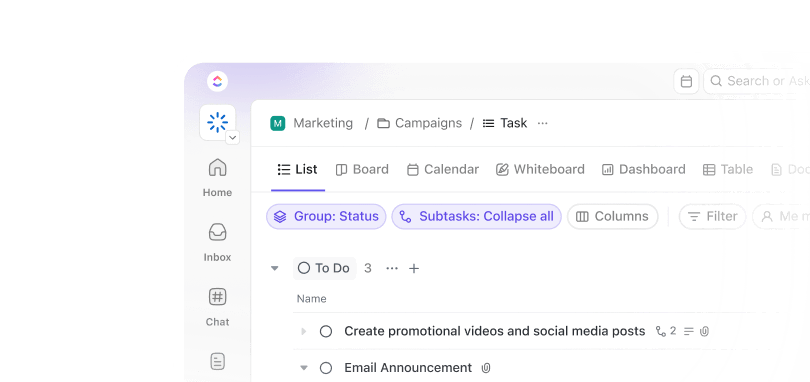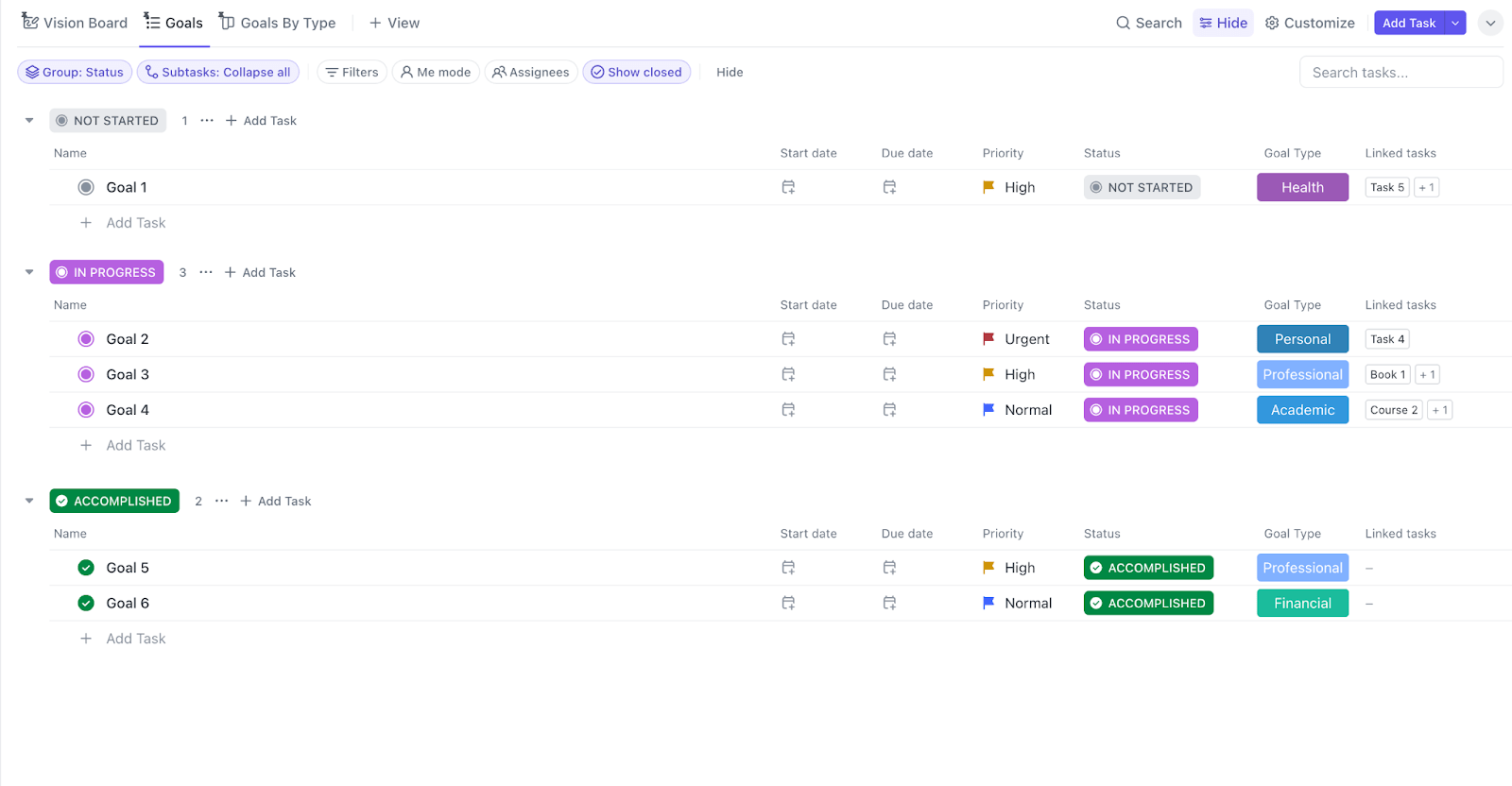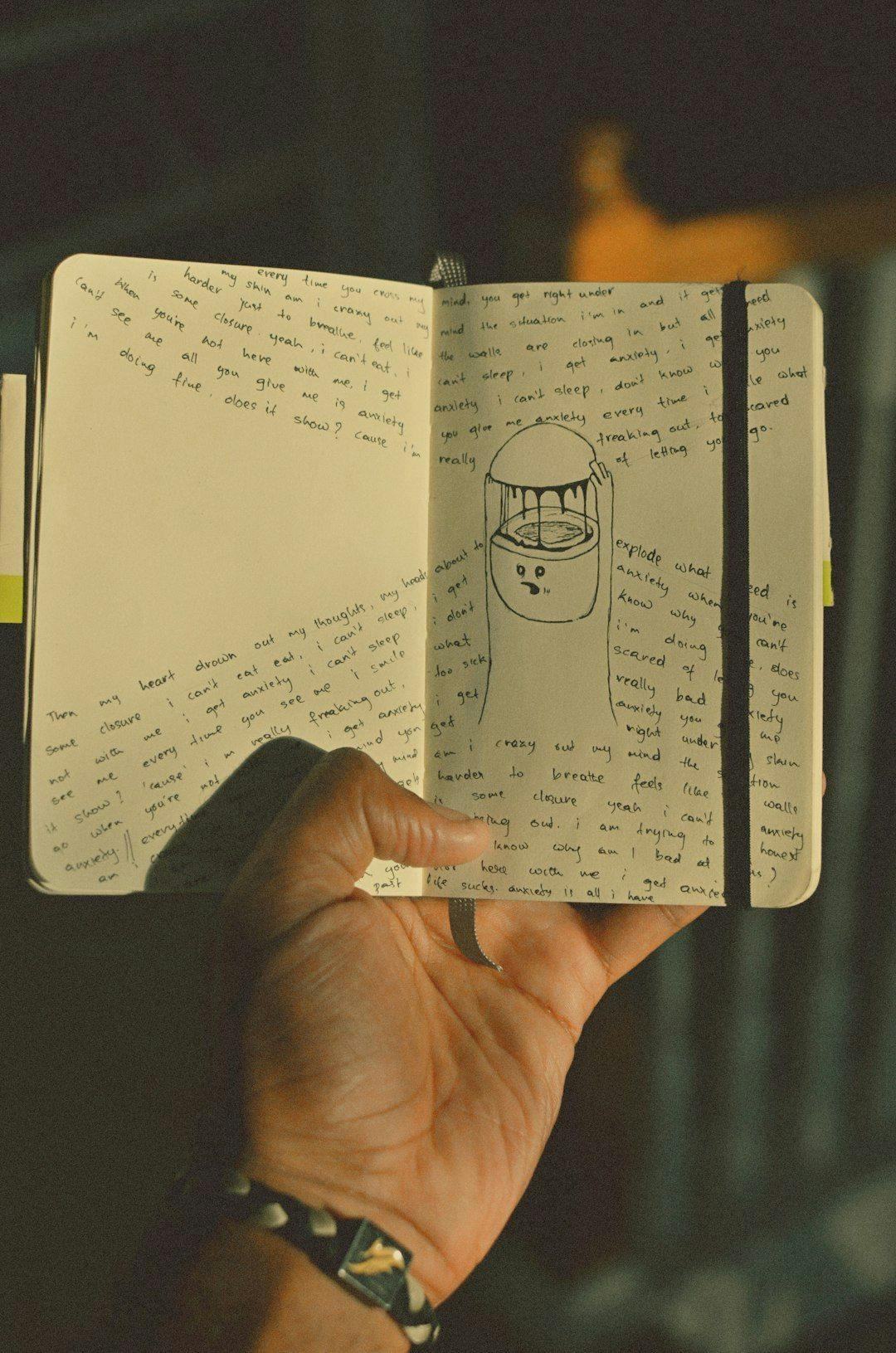Every time you find yourself reaching for coffee at 3 PM without thinking about it, or checking your phone mid-task, a habit loop is at work.
These tiny, automatic patterns shape more of your day than you realize, from your bedtime routine to how you pay your bills.
The real challenge isn’t knowing what you want to do; it’s figuring out why you keep doing the things you do, and why you avoid the things you should be doing.
That’s where understanding habit loops becomes a game-changer for productivity. By hacking your habit loops, you can build healthy, productive routines that last. In this post we’ll share:
- Examples of the most common habit loops, so you can recognize the ones you might be stuck in
- How to counter specific habit loops and restore balance
- How tools like can help you overcome detrimental habit loops
Let’s dive in! 🎯
What is a Habit Loop & How to Use It for Productivity (+Examples)
What Is a Habit Loop?
If you’re like most of us, you don’t think conscously about brushing your teeth or unlocking your phone, you just do it.
That’s a habit loop in action. It’s how your brain conserves energy: turning repeated behaviors into shortcuts.
Habit loops work because they’re consistent. Once a loop forms, it plays out the same way every time. Once you understand the pattern, you can change the outcome.
The three elements of every habit loop
Every habit loop consists of three elements:
- Cue: A trigger, internal or external, that starts the behavior
- Routine: The action you take once the loop begins
- Reward: The benefit your brain gets from completing the behavior
You wake up in the morning to the smell of coffee that your partner is drinking: ☕️
- The smell is your cue
- Adding the coffee grounds and making a fresh cup is your routine
- The comfort or alertness you feel after the first sip, that’s the reward
This loop strengthens through repetition, especially when the emotional state attached to the reward is positive. Over time, your brain starts to crave the result and reacts automatically to the cue, even if you’re not aware of it
Why are habit loops hard to break?
The human mind is drawn to patterns. We’re great at spotting them and we’re wired to act according to them. 🧠
Your brain loves patterns that reduce friction. That’s why it stores these loops in automatic processing mode, making them feel instinctive. Now while this is incredibly helpful if you’re building good habits, it can ve frustrating when you’re trying to change bad habits.
Even when your desired behavior changes, the brain still clings to the original cue and craving. The only way to break the cycle is to identify the pattern and replace the routine, keeping the reward intact.
This creates a feedback loop that rewires your brain over time. It doesn’t happen in a day. But once you install a new routine that satisfies the same craving, you’ve officially started reshaping the loop. 🔁
📖 Also Read: Learn how micro habits can transform the way you live.
Examples of Habit Loops in Everyday Life
Most of your day runs on patterns you don’t even think about. These habit loops don’t announce themselves, but they’re behind how you wake up, get through work, take breaks, and even reward yourself.
Once you start spotting these cycles, it gets easier to replace the ones that don’t serve you and reinforce the ones that do.
Personal habit loops
You don’t build habits by accident. They form through repeated loops, anchored in moments you often overlook. Here’s what these loops actually look like in daily life:
📱 The wake-and-scroll loop
Cue: Waking up and feeling that split-second disorientation
Routine: Reaching for your phone and opening social apps or your inbox
Reward: A burst of stimulation that helps your brain feel “plugged back in.”
🎯 Why it’s hard to break: After hours of no input, your brain craves context. Notifications, updates, and messages offer instant engagement. But this current habit can chip away at your morning focus.
⚡️ How to change it: Keep your phone across the room. Replace the scroll with a new routine, like writing down one intention for the day or simply drinking water. You’re still responding to the same cue with a better reward.
🍪 The I-deserve-this snack loop
Cue: Mid-afternoon mental crash, often post-meeting or deadline
Routine: Grabbing a chocolate chip cookie, energy bar, or sugary soda without thinking
Reward: Temporary comfort, distraction, or a quick sugar boost
🎯 Why it’s hard to break: The craving isn’t about food; it’s tied to an emotional state. This loop often links back to childhood rewards or stress relief patterns. It feels like self-care, but leads to unwanted behaviors when repeated.
⚡️ How to change it: Ask yourself what you’re really craving for, comfort, stimulation, or a break. Then build a better loop: maybe a walk, a playlist reset, or a brain dump (journaling FTW!). The goal isn’t to remove the reward, but to redirect the routine.
👀 Did You Know? Chocolate chip cookies are scientifically engineered to hit the brain’s reward system like a drug.
The combo of sugar, fat, and a gooey texture triggers dopamine release, reinforcing emotional habit loops. Food scientists have actually studied this that cookies like these aren’t just treats; they’re habit-forming cues disguised as comfort.
🗣️ The vent-to-avoid loop
Cue: Feeling frustrated after a rough interaction, unclear feedback, or a meeting that didn’t go your way
Routine: Slacking a teammate or messaging a friend to vent, “Can you believe that?”, “What was that even about?”, “Ugh, not again…”
Reward: Emotional validation, quick release of tension, and a feeling of being seen or right
🎯 Why it’s hard to break: This loop feeds on your emotional state. It offers short-term comfort but often replaces problem-solving with blame-sharing. Over time, it becomes a reactive outlet that delays reflection or action.
Left unchecked, this loop turns minor stress into a narrative. It reinforces the behavior of externalizing discomfort instead of processing or redirecting it. The loop trains your brain to escape friction through expression and not resolution.
⚡️ How to change it: Identify the cue as a moment of activation. Instead of messaging someone to whom you can rant, try recrording a 5-minute voice note to yourself or jot the immediately preceding action down. You keep the reward clear but reframe it through self-regulation.
✨ The surface-cleaning loop
Cue: Sitting down to begin a challenging task you’ve been avoiding, maybe writing a proposal or budgeting your expenses
Routine: Suddenly noticing crumbs on your desk, rearranging pens, fixing a stack of books, wiping a screen
Reward: A brief sense of productivity and control, even though you haven’t started the real task
🎯 Why it’s hard to break: This loop kicks in when your emotional state is avoidance masked as productivity. Your brain craves completion but dreads mental strain. Cleaning becomes a substitute task: low risk, instantly gratifying, and visually rewarding.
If this is your go-to loop, you’re not lazy; you’re simply buffering. But the loop trains your brain to associate “getting ready” with shallow wins instead of real momentum.
⚡️How to change it: Break free of the illusion of productivity. Resist the urge to check your email or respond to that chat message. Use technology to help you. Deactivate notifications, use time-blocking methods or use time management methods like the pomodoro technique to stay focused on your most challenging task.
👀 Did You Know? The Zeigarnik Effect explains why unfinished tasks linger in your mind, prompting you to engage in activities like tidying up to alleviate the mental tension.
This psychological phenomenon, discovered by Bluma Zeigarnik, reveals that people remember incomplete tasks better than completed ones, leading them to seek closure through alternative actions.
🧠 The thought-loop trap
Cue: Trying to fall asleep after a socially awkward moment, missed deadline, or difficult feedback
Routine: Mentally replaying the scene again and again—what you said, what they meant, what you should’ve done differently
Reward: A false sense of closure or problem-solving
🎯 Why it’s hard to break: This is an internal habit loop built around cognitive overload or information overload. Your brain treats the memory as unfinished business. It believes that more analysis equals control, but it’s really just anxiety on repeat.
⚡️ How to change it: Shift the routine from mental looping to external processing. Journaling the immediately preceding action that triggered the spiral gives the brain an off-ramp. It’s not avoidance, it’s redirection.
🔁 The water-then-scroll loop
Cue: Finishing a task and walking to the kitchen for a break
Routine: Grabbing a glass of water, then automatically reaching for your phone and scrolling without realizing it
Reward: Mental rest layered with dopamine from novelty or social updates
🎯 Why it’s hard to break: This loop starts as a healthy reset—hydration, movement, but gets hijacked by a second routine. The brain now links water with scroll time. The first cue masks the second loop.
If left unexamined, the healthy cue becomes a Trojan horse for digital distraction. You think you’re taking a break, but you’re training your brain to seek escape instead of rest.
⚡️ How to change it: Leave your phone at your desk when heading for water breaks. Replace the scroll impulse by keeping a notebook near the water cooler for capturing quick ideas or simply practice 30 seconds of mindful breathing while hydrating. This breaks the automatic phone-reaching trigger-reward cycle.
Work and productivity habit loops
Your workflow might feel chaotic on the surface, but under it, habit loops are quietly dictating how you start tasks, avoid friction, and even recover from stress.
Here are some specific examples that show what’s really happening behind the scenes:
📅 The meeting buffer loop
Cue: Finishing a high-stakes client call with your next meeting just minutes away
Routine: Opening your calendar again, skimming your inbox, maybe tweaking your notes but never really decompressing
Reward: A sense of staying “in control” by not letting momentum drop
🎯 Why it’s hard to break: Sometimes, this particular habit loop can step from a fear of losing momentum or energy. But when you stack your meetings without breaks, your brain loses the natural pause it needs to reset. This loop feels efficient, but it builds up mental fatigue over time. Instead of using the lunch break or even a short reset, you’re trapped in a sprint that never ends.
⚡️How to change it: Schedule intentional buffers, even just a half hour to recalibrate between extremely critical tasks. That pause becomes the cue for a healthier routine: walking, reflecting, or switching contexts with clarity instead of stress.
🗂️ The doc-hopping loop
Cue: Opening a shared folder to work on one doc, but noticing six others you “should check”
Routine: Clicking through each one, tweaking formatting, reading comments, updating headers, without finishing any
Reward: A dopamine drip of micro-completions and false progress
🎯 Why it’s hard to break: This loop rewards busyness, not depth. Your brain sees patterns of undone tasks and feels compelled to “tidy up” instead of doing focused work. The habit loop consists of shallow wins stacked on distraction.
⚡️ How to change it: Identify what actually needs to get done. Keep one doc or task open. If you feel tempted to jump, write the immediately preceding action down on paper and come back to it. Anchoring breaks the loop.
⏳ The deadline panic loop
Cue: Realizing a report or deck is due tomorrow, and it’s barely started
Routine: Shifting into overdrive, jumping between tabs, rewriting intro slides, obsessing over details while skipping strategy
Reward: Temporary relief from panic, and the illusion of being “in the zone”
🎯 Why it’s hard to break: This loop is fueled by adrenaline and avoidance. Instead of structured progress, your brain enters survival mode. It’s important to remember that more often that not, a high emotional state drives chaos, not clarity.
⚡️ How to change it: Rewire the loop earlier in the process. Use project checkpoints or personal deadlines to spread out the mental load. The goal is to change bad habits around how they show up.
🧾 The clarify-later loop
Cue: Getting tagged in a project task with a vague description, something like “final review,” “sync with the team,” or “make sure this aligns.”
Routine: Opening the task, skimming it, and deciding to “come back to it” later, then moving on to something clearer or easier
Reward: Short-term relief from ambiguity and the discomfort of not knowing what’s expected
🎯 Why it sticks: This loop is fueled by mental resistance. Your brain avoids open-ended work because it requires both thinking and initiating. Instead of creating clarity, it seeks certainty, defaulting to tasks with a clear endpoint. This behavior gets repeated until deadline pressure forces a last-minute scramble.
The habit loop consists of avoidance disguised as planning. And while the cue is external (a vague task), the routine is internal: deferring, avoiding, and then forgetting. Over time, this builds patterns of misalignment and missed context, especially in collaborative workflows.
⚡️ How to change it: Train your brain to recognize vague task descriptions as a cue to ask for specifics immediately. That creates a new loop—cue a routine of proactive clarification, followed by the reward of early alignment and reduced stress.
How Helps Reinforce Positive Habit Loops
Understanding your habit loop gives you clarity. But reinforcing it day after day without forgetting cues or losing momentum requires the right structure. helps turn scattered intentions into repeatable systems by anchoring every part of the loop directly into your workflow.
Make the cue visible and consistent
Habits don’t stick when you rely on memory alone. You need external cues that show up exactly when you need them.

Reminders make this part effortless. Whether you’re establishing a 3 p.m. hydration habit or a Sunday planning reset, you can set time- or location-based prompts that eliminate guesswork.
For recurring routines, Recurring Tasks can help you automate repetition so your cue appears like clockwork, not as a mental to-do.
Make the routine easier to complete
When a routine is too vague or overwhelming, it’s easy to avoid even if the cue shows up perfectly.
Tasks and Checklists break down large behaviors into small, scannable actions.
And with Time-Tracking, you can see how long routines actually take, helping you remove assumptions and adjust your habits in real time.
If you’re working toward a longer outcome, Goals lets you tie small wins to measurable progress, turning effort into strategy.
Need a starting point? Try the Personal Habit Tracker Template.
It helps you:
- Identify patterns in your daily behavior
- Track habits visually with built-in dashboards
- Stay accountable without relying on motivation
Make the reward visible and satisfying


Your brain won’t stick with a habit unless it sees the payoff.
Dashboards let you visualize streaks, completions, and progress at a glance. Whether you’re checking off a five-day habit or reviewing a monthly goal, you can build a live view of your success. Automations can even help you close the loop, moving completed tasks to a “done” list or updating your progress metrics instantly.
Even small signals of completion serve as positive reinforcement, helping you repeat the loop without forcing motivation every time.
Want a more flexible system for habit-driven planning?
Use the Personal Productivity Template to structure your day around routines that actually align with how you work.
Reinforcement that evolves with your workflow
You don’t need more hacks. You need systems that support how habits really work: triggered by cues, guided by structure, and closed with meaningful reward.
gives you the ability to build those loops across real workflows and not in isolation, but as part of your day-to-day operations. That’s how habit formation becomes more than theory, but your default setting.
Make Habits Work for You
Your habit loop is more than just a productivity concept. It’s how you respond to habit cues that show up in your environment. Recognizing those triggers helps you replace default behaviors with new habits that serve you better.
When you understand how cue, routine, and reward patterns work across real habit loop examples, you gain power over your daily decisions and unlock the ability to shape your future with more intention.
If you want to create smarter routines, track the habits that matter, and build systems that support a healthy lifestyle, then try today.


Everything you need to stay organized and get work done.














